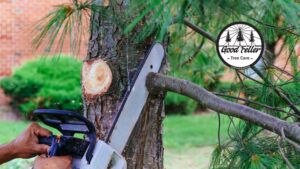Installing gypsum boards is a common part of many home renovation projects. Whether you’re upgrading your walls, finishing a basement, or creating new rooms, gypsum board installation provides a smooth, durable surface for your walls and ceilings. But how do you ensure the job is done like a professional? In this blog, we’ll guide you through the process of installing gypsum boards like a pro in your home, offering helpful tips and insights to make your project a success.
Why Gypsum Board Installation Is Important
Gypsum boards (commonly known as drywall) are widely used in construction because they provide a smooth, sturdy surface that is easy to finish and paint. Proper installation is crucial, as poor-quality work can result in visible seams, cracks, or damage over time. Whether you’re handling the job yourself or hiring professionals, knowing how to install gypsum boards effectively is essential for achieving lasting, professional-looking results.
Step-by-Step Guide: How to Install Gypsum Boards Like a Pro
If you’re ready to tackle your gypsum board installation, here’s a step-by-step guide that covers all the key elements, ensuring that the job is done right.
1. Preparation is Key: Gather Tools and Materials
Before you begin, gather all the necessary tools and materials. Having everything on hand ensures that you can complete the installation smoothly without unnecessary delays.
Tools You’ll Need:
-
Utility knife or drywall saw – for cutting gypsum boards.
-
Drywall screws or nails – for securing the boards to the studs.
-
Screw gun or drill – to fasten the screws.
-
Drywall knife – for applying joint compound and smoothing seams.
-
Sanding block – to smooth out any rough areas after mudding.
Materials:
-
Gypsum boards – be sure to measure the area to determine how many boards you need.
-
Joint compound – for finishing seams.
-
Drywall tape – paper or fiberglass for taping seams.
-
Drywall screws or nails – to attach the boards securely.
Having these tools and materials in advance will make the entire installation process more efficient and streamlined.
2. Measuring and Cutting the Gypsum Boards
One of the most important steps in gypsum board installation is cutting the boards to the right size. Here’s how you do it:
-
Measure the Space: Begin by measuring the area where you’ll be installing the gypsum board. Make sure you take accurate measurements to avoid wasting material or creating gaps.
-
Mark the Boards: Mark your gypsum board with the appropriate measurements using a pencil and a square.
-
Cut the Board: Use a utility knife to score the board along the marked lines, then snap it along the score. Use a drywall saw to cut through any sections that need more precise cutting, such as around outlets or corners.
Tip: Measure and cut each board carefully. A mistake in measurements can lead to awkward gaps or the need to make additional cuts, which can slow down the process.
3. Installing the Gypsum Boards
Now that your boards are cut to size, it’s time to install them. The key here is precision, so take your time and follow these steps:
-
Start with the Ceiling: If you’re working on both walls and ceilings, start with the ceiling boards. This ensures that the wall boards will cover the edges of the ceiling boards, giving you a cleaner look.
-
Position the Board: Place the gypsum board against the studs or ceiling joists and secure it in place with drywall screws. Leave about 1/8-inch gap between the bottom of the board and the floor to allow for expansion.
-
Screw Placement: Place drywall screws about 16-18 inches apart, securing the board to the studs or joists. Be careful not to overdrive the screws; they should be slightly recessed into the board but not break through the surface.
Tip: Use a drywall lift to hold ceiling boards in place while you screw them in. It makes the job much easier and safer.
4. Taping and Mudding the Seams
Once the gypsum boards are installed, the next crucial step is taping and mudding the seams to create a smooth, seamless finish.
-
Apply the Tape: Place drywall tape along the seams where the gypsum boards meet. For a more reliable result, use paper tape instead of fiberglass tape, which can be more prone to cracking.
-
Apply Joint Compound: Using a drywall knife, apply a thin layer of joint compound over the taped seams. Smooth it out, feathering the edges to blend it into the surface of the board.
-
Let It Dry: Allow the joint compound to dry completely. This can take a few hours to a day, depending on the thickness of the compound.
-
Sand and Reapply: After the compound is dry, sand the seams lightly to smooth them out. Apply additional layers of joint compound, sanding between each layer until the seams are perfectly smooth.
Tip: Don’t rush this step. Properly taped and mudded seams are essential for a flawless finish, and it’s worth taking your time to get it right.
5. Finishing Touches and Painting
Once your seams are smooth, you’re almost done. The last step is to finish the surface and make it ready for painting.
-
Prime the Surface: Apply a coat of primer to the gypsum board to prepare it for painting. This helps the paint adhere better and gives a more even finish.
-
Paint: After the primer has dried, you can paint your newly installed walls or ceiling with your desired color. Make sure to use a paint designed for drywall to ensure durability.
Tip: If you’re unsure about your finishing skills, consider hiring professionals for a flawless finish. Gypsum Board Installation Services Sioux Falls, SD can provide expert help in ensuring your walls and ceilings are perfectly finished.
6. Consider Professional Help for the Best Results
While the DIY route can be rewarding, there are times when hiring a professional is the best choice. If the job seems too complex, or you’re simply looking for the highest quality finish, consider reaching out to Gypsum Board Installation Services Sioux Falls, SD. These professionals have the experience, tools, and expertise to get the job done right.
Hiring a professional can save you time and effort, especially if you want to avoid mistakes and achieve a top-tier result.
Conclusion: Installing Gypsum Boards Like a Pro
By following these steps, you’ll be well on your way to installing gypsum boards like a professional. With the right preparation, tools, and techniques, you can achieve a smooth, durable finish that will last for years. And, if you want expert help or a flawless finish, don’t hesitate to reach out to Gypsum Board Installation Services Sioux Falls, SD.






